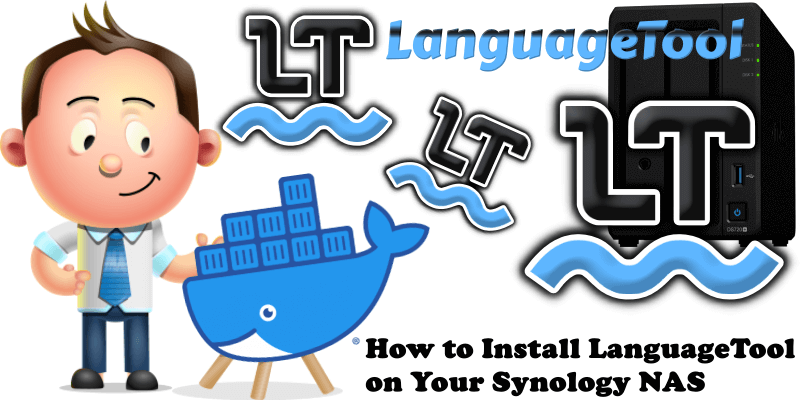
LanguageTool is an Open Source proofreading software for English, French, German, Polish, and more than 20 other languages. It finds many errors that a simple spell checker cannot detect. It will detect the errors only when text fields are available. In this step by step guide I will show you how to install LanguageTool on your Synology NAS using Docker.
STEP 1
Please Support My work by Making a Donation.
STEP 2
Install Container Manager via Synology “Package Center”. If you run an older DSM version (under 7.2), search for Docker instead of Container Manager.
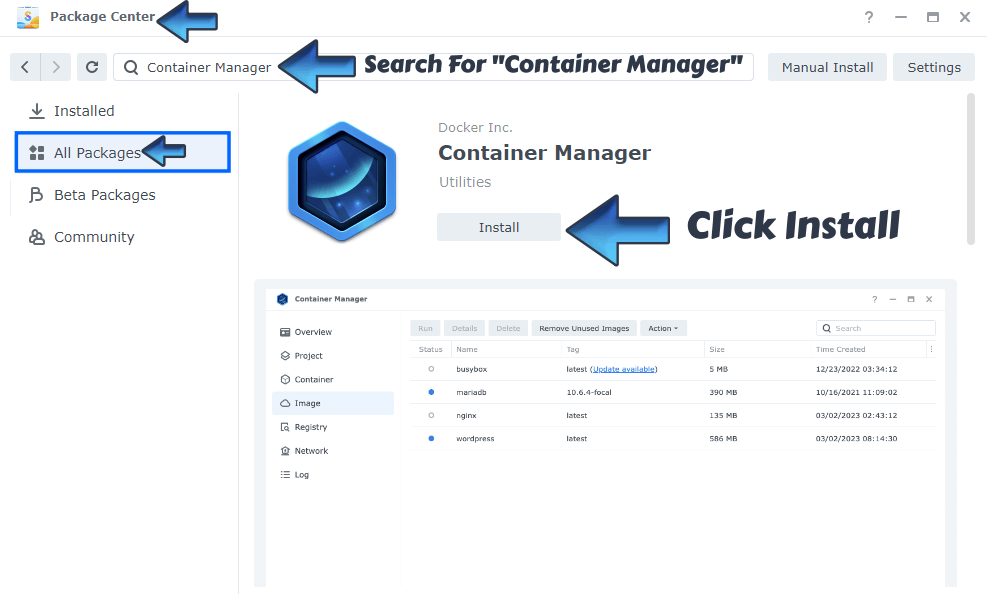
STEP 3
Go to File Station and open the docker folder. Inside the docker folder, create one new folder and name it languagetool. Follow the instructions in the image below.
Note: Be careful to enter only lowercase, not uppercase letters.
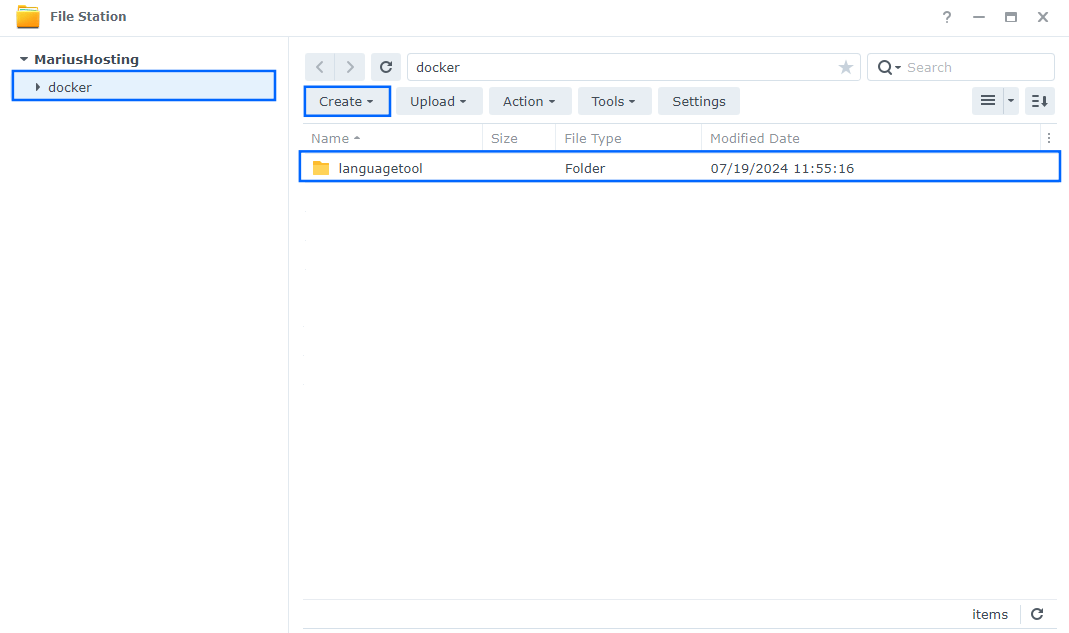
STEP 4
Download the .zip grammatical data from the blue link below, then choose your language. I have chosen the English .zip file which is more than 8GB.
STEP 5
Using drag and drop, upload the .zip file you have previously downloaded at STEP 4 in the languagetool folder that you have previously created at STEP 3. Follow the instructions in the image below.
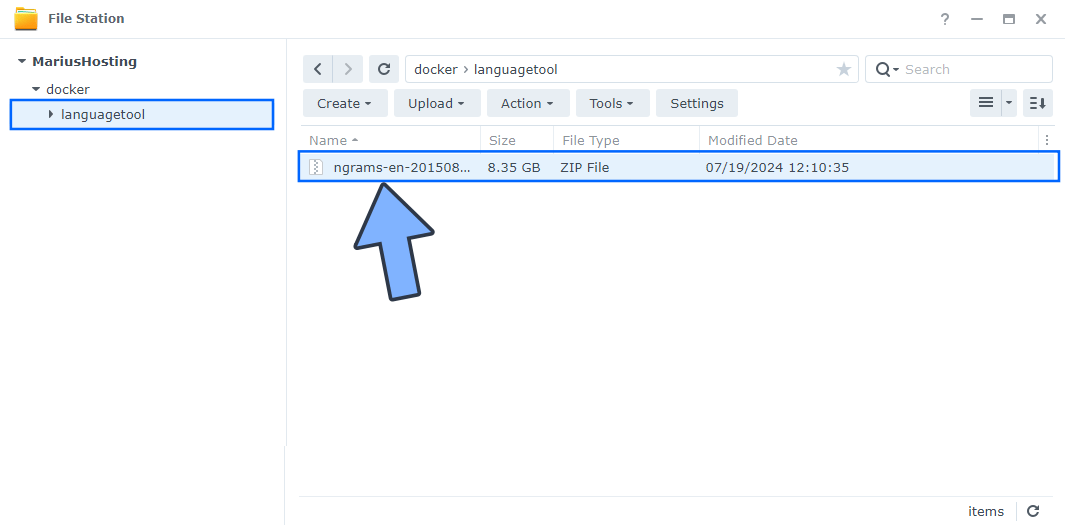
STEP 6
Right click on the .zip file and extract it in the languagetool folder. Follow the instructions in the image below.
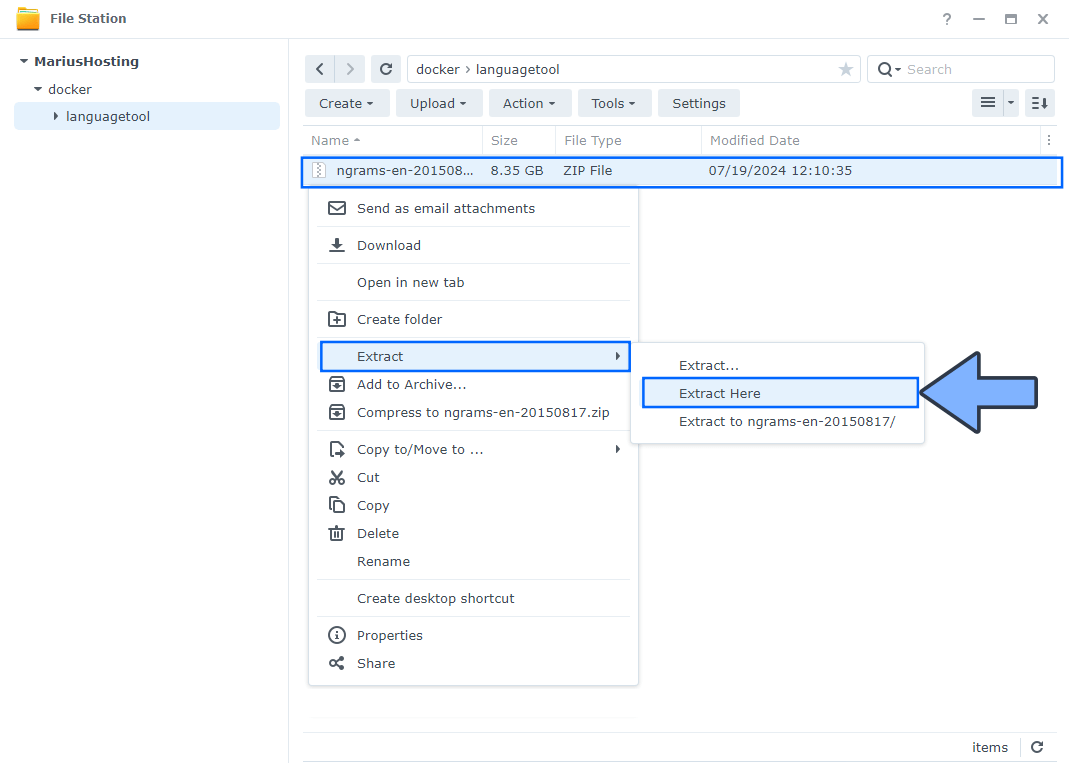
STEP 7
After the extraction is complete, you can delete the .zip file. Right click on the .zip file then delete. Follow the instructions in the image below.
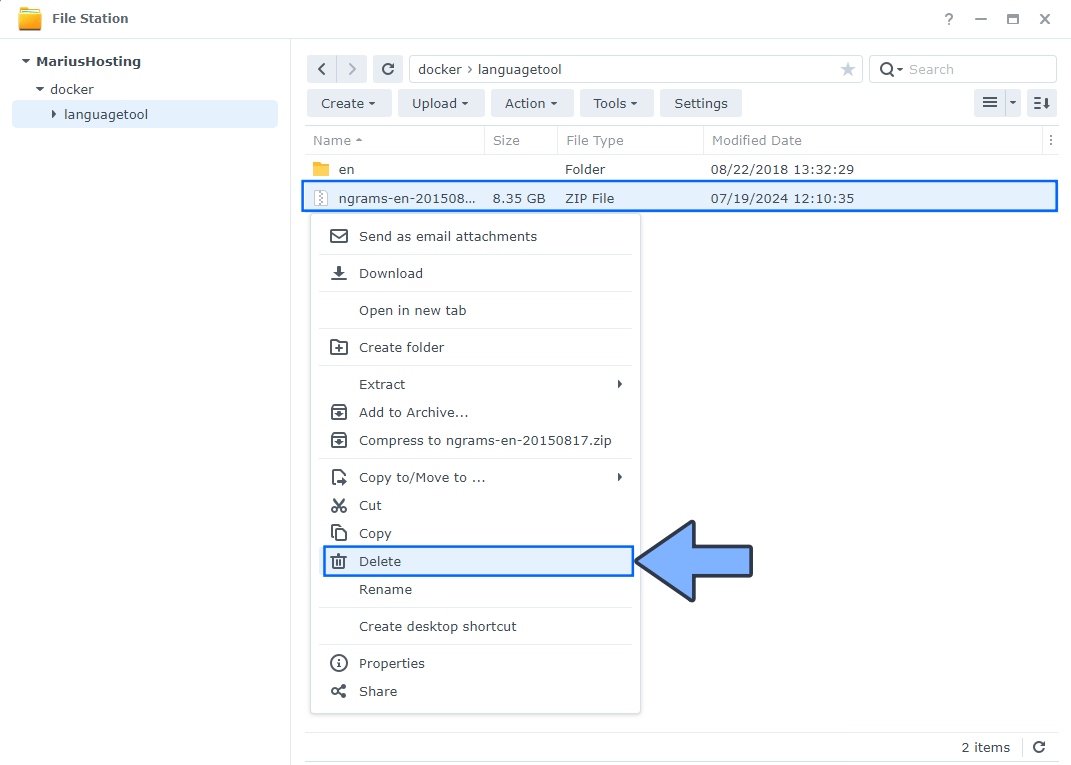
STEP 8
Go to Control Panel / Task Scheduler / Create / Scheduled Task / User-defined script. Follow the instructions in the image below.
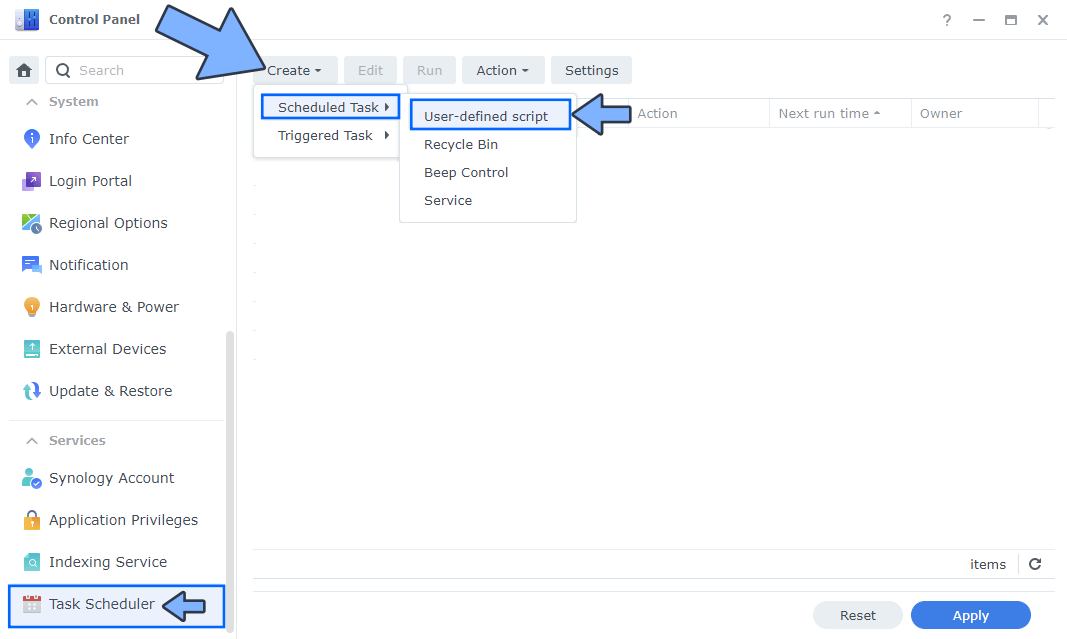
STEP 9
Once you click on User-defined script, a new window will open. Follow the instructions below:
- General: In the Task field type in Install LanguageTool. Uncheck the “Enabled” option. Select root User.
- Schedule: Select Run on the following date then select “Do not repeat“.
- Task Settings: Check “Send run details by email“, add your email then copy paste the code below in the Run command area. After that, click OK.
docker run -d --name=languagetool \ -p 8010:8010 \ -e langtool_languageModel=/ngrams \ -e Java_Xms=1g \ -e Java_Xmx=1g \ -v /volume1/docker/languagetool:/ngrams \ --restart always \ --net=host \ erikvl87/languagetool
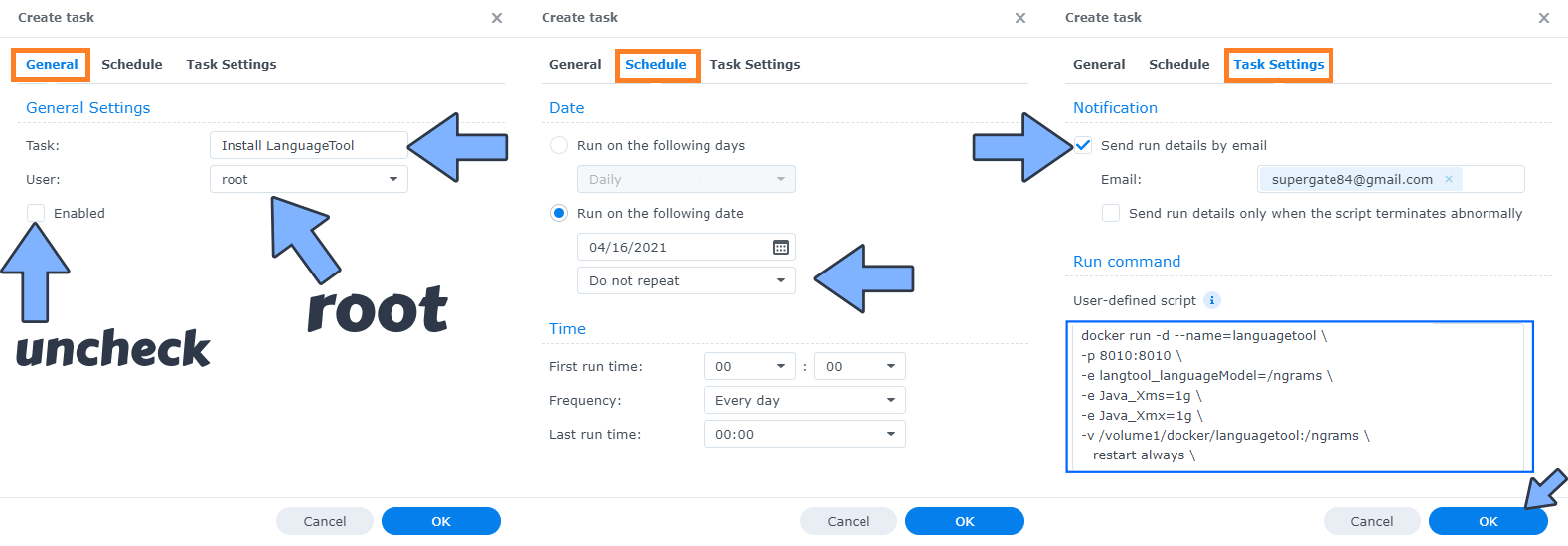
STEP 10
After you click OK on STEP 9 a new warning pop up window will open. Click OK.
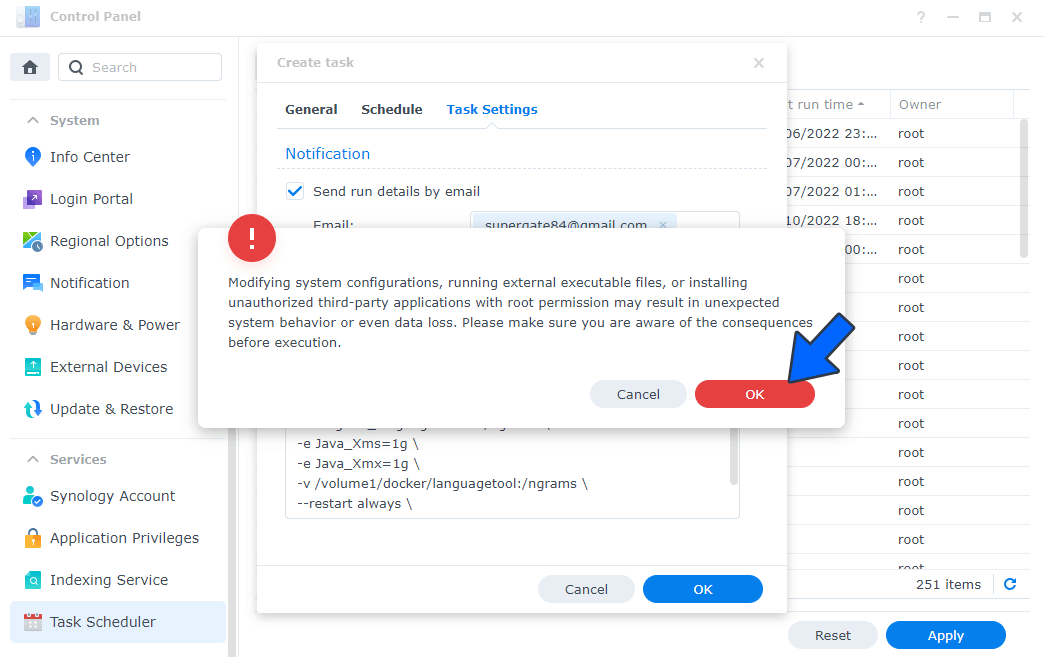
After you click OK, type in your DSM Password then click Submit. Follow the instructions in the image below.
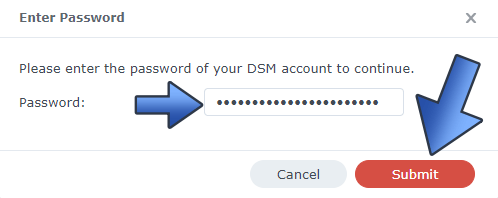
STEP 11
After you click Submit on STEP 10, select your “Install LanguageTool” Task then click the “Run” tab. You will be asked to run Install LanguageTool – click OK. Follow the instructions in the image below.
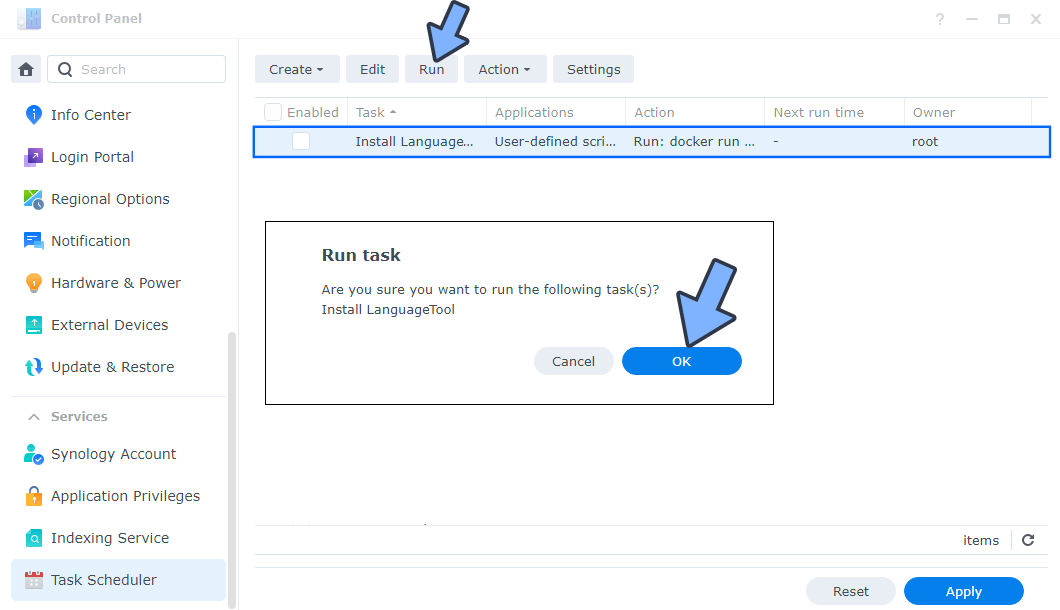
STEP 12
Download the chrome extension for LanguageTool by clicking the blue link below. Click Add to Chrome. Follow the instructions in the image below.
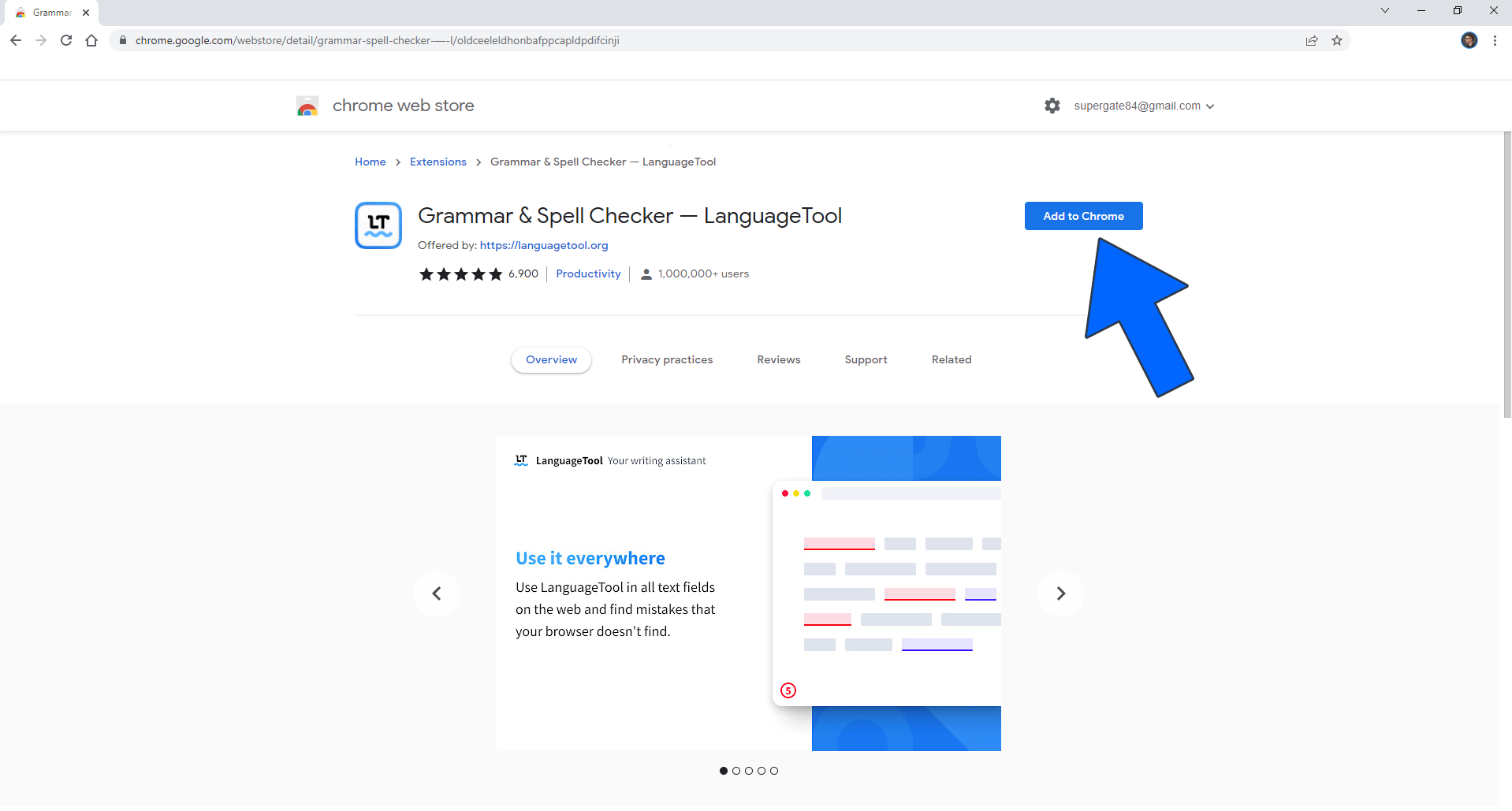
STEP 13
After you click Add to Chrome at STEP 12 a new pop up window will open. Click Add extension. Follow the instructions in the image below.
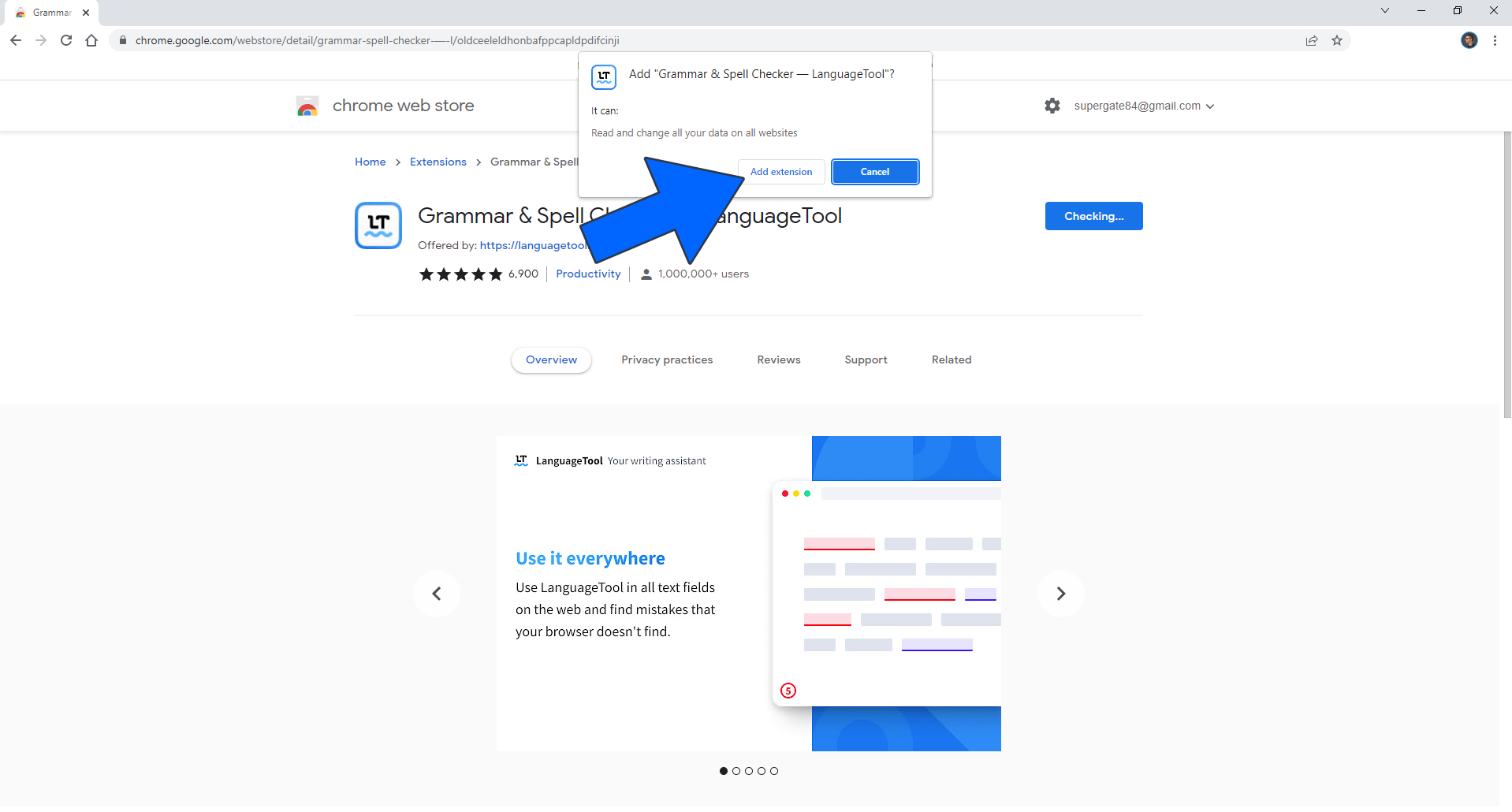
STEP 14
After you click Add extension at STEP 13 a new page will open. Click “Okay, got it“. Follow the instructions in the image below.
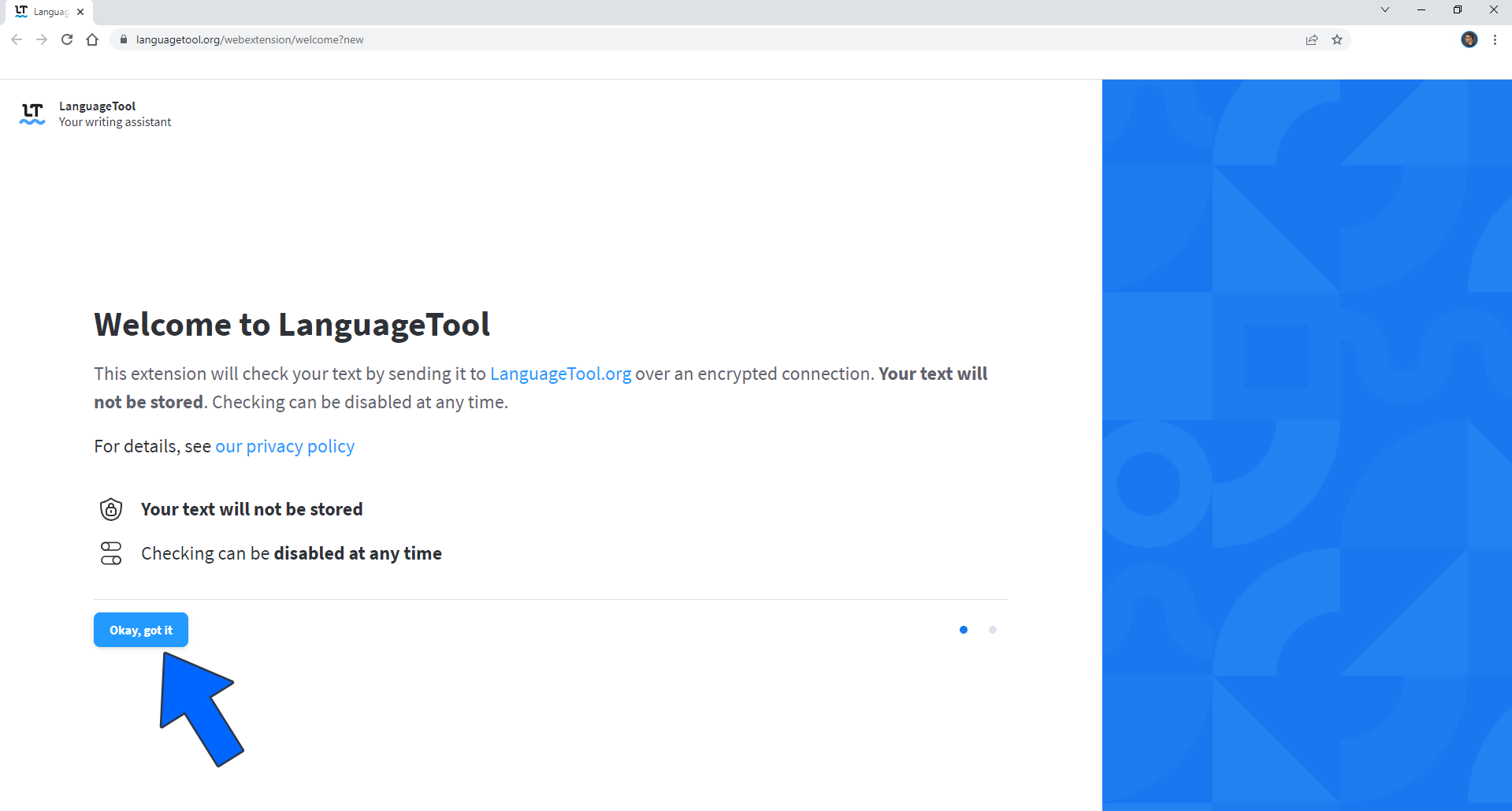
STEP 15
Click Continue. Follow the instructions in the image below.
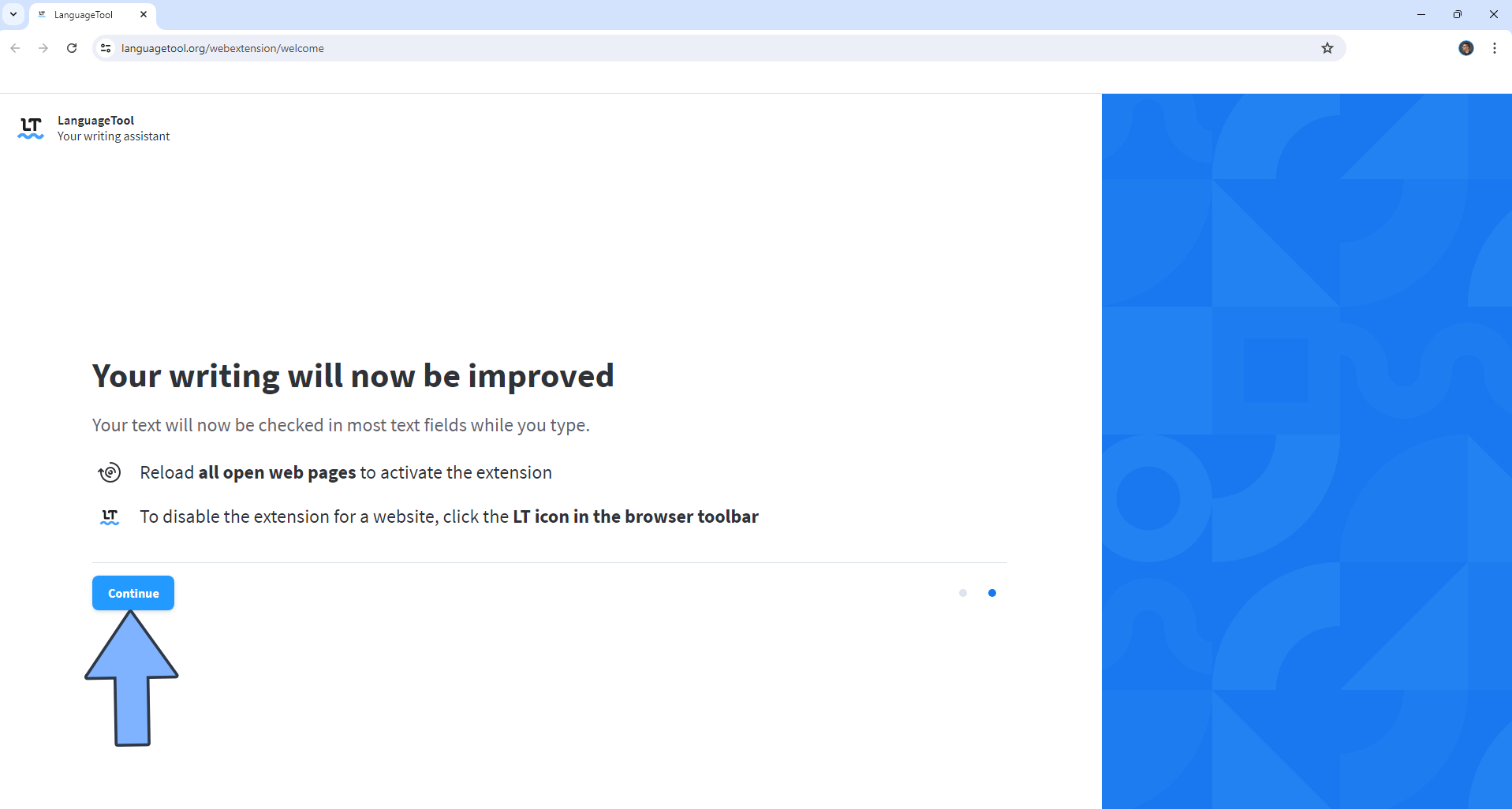
STEP 16
You should find the LanguageTool icon at the top right of your browser page. Click the gear icon. Follow the instructions in the image below.
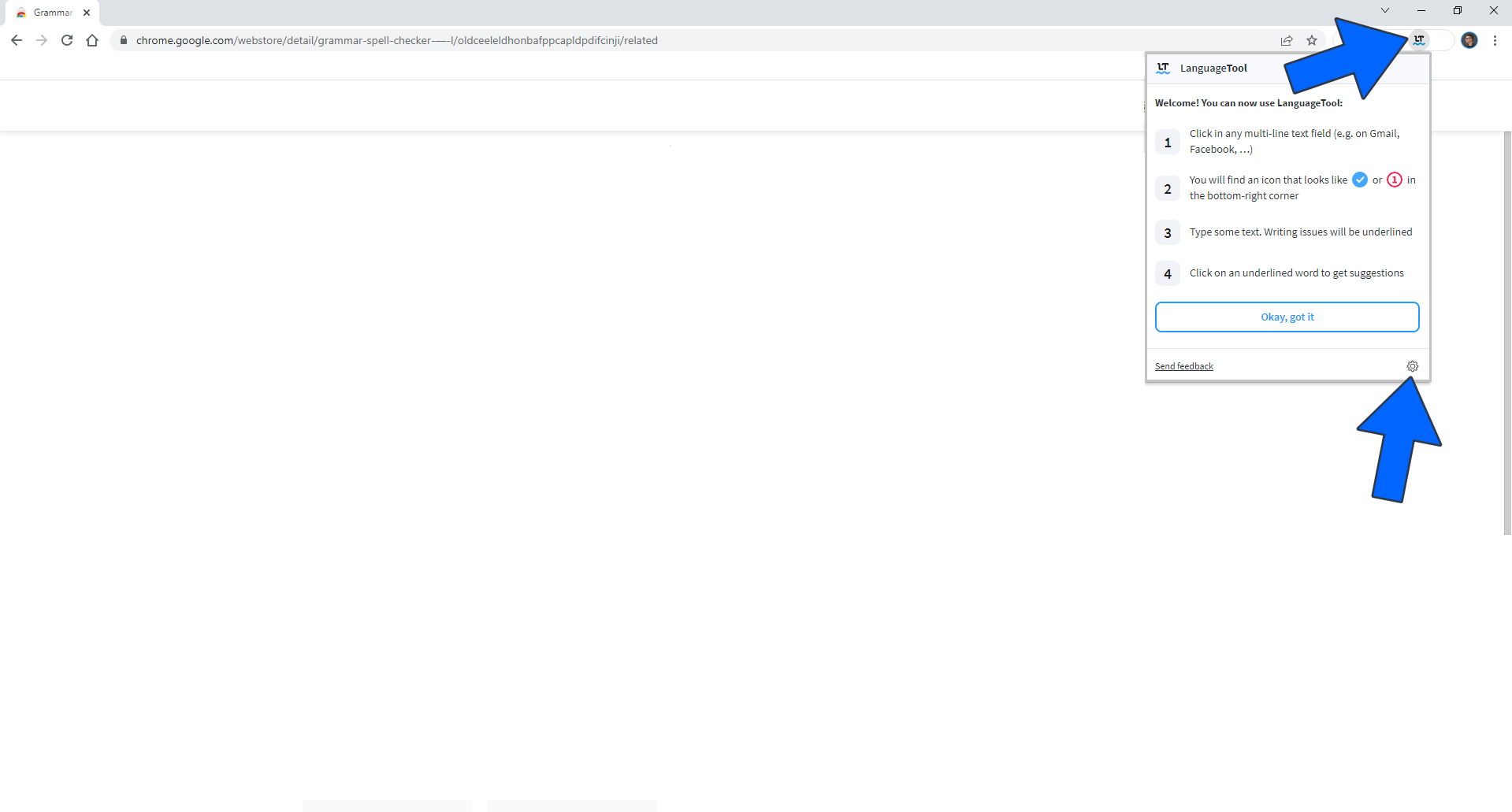
STEP 17
On the General settings area activate the “Picky mode” then scroll down the page a little bit. Follow the instructions in the image below.
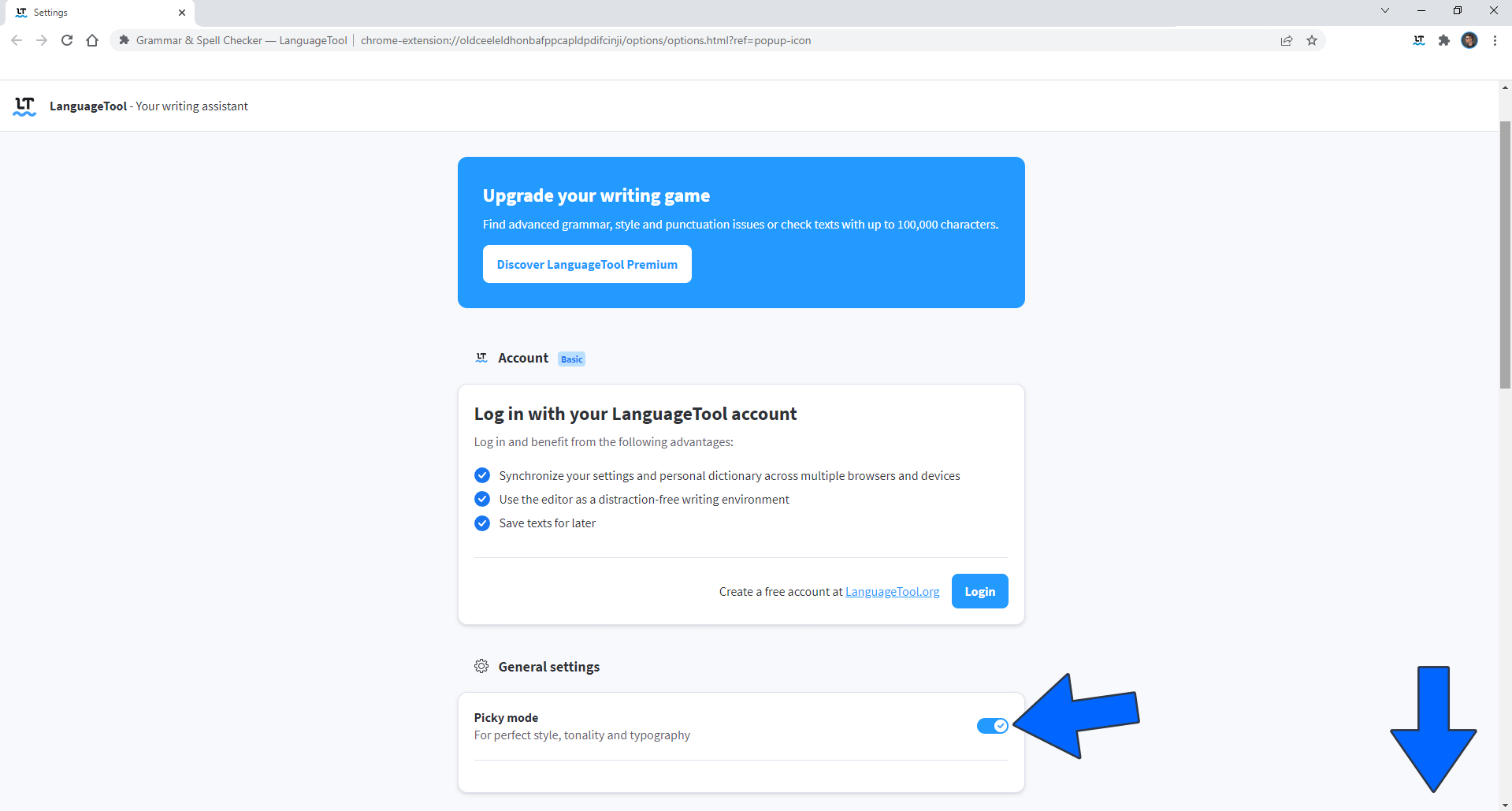
STEP 18
Choose your Favorite language, in my case “English“. Scroll down the page a little bit. Follow the instructions in the image below.
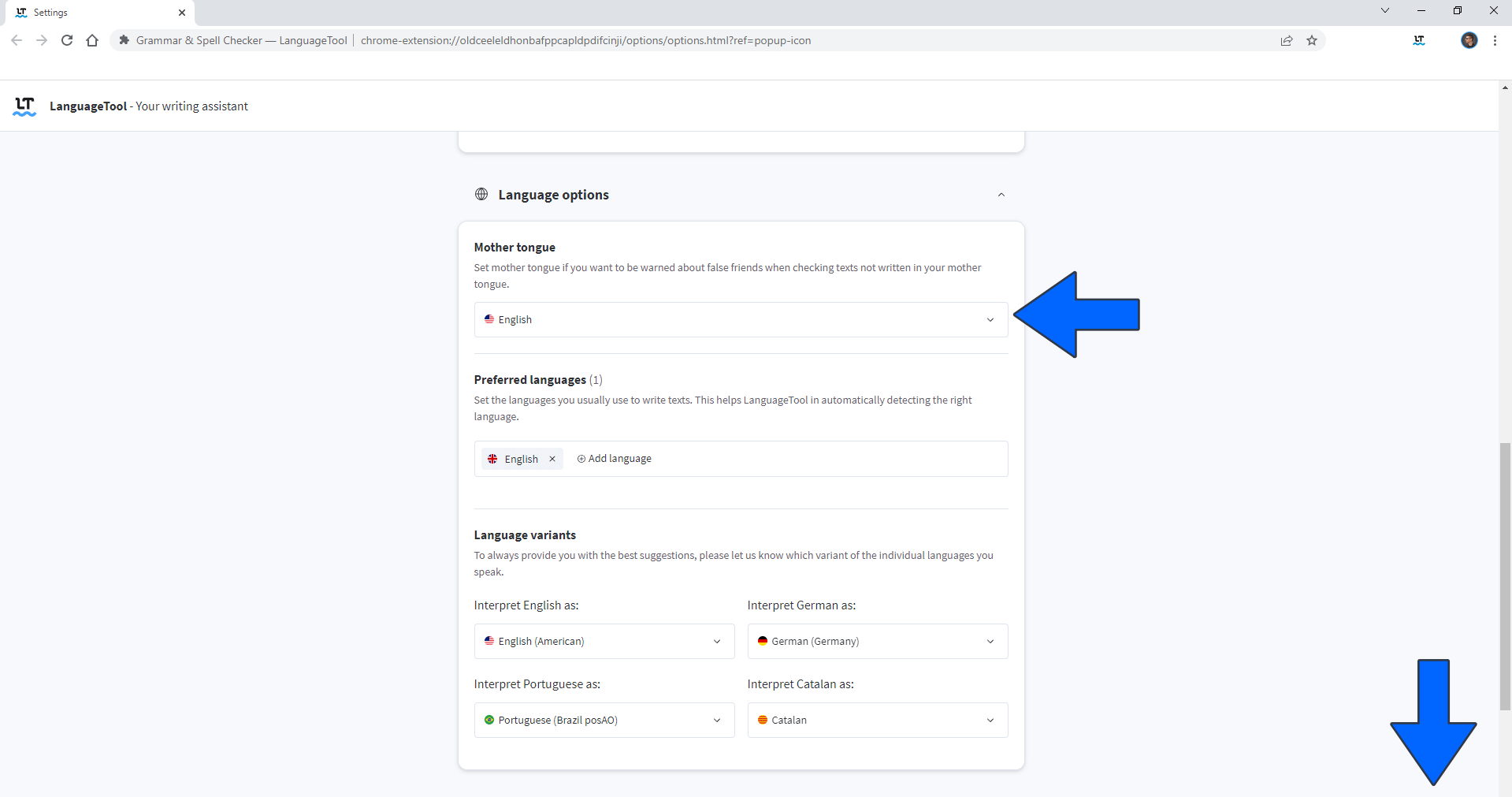
STEP 19
🟢Please Support My work by Making a Donation. Almost 99,9% of the people that install something using my guides forget to support my work, or just ignore STEP 1. I’ve been very honest about this aspect of my work since the beginning: I don’t run any ADS, I don’t require subscriptions, paid or otherwise, I don’t collect IPs, emails, and I don’t have any referral links from Amazon or other merchants. I also don’t have any POP-UPs or COOKIES. I have repeatedly been told over the years how much I have contributed to the community. It’s something I love doing and have been honest about my passion since the beginning. But I also Need The Community to Support me Back to be able to continue doing this work.
STEP 20
On the Advanced settings area choose the LanguageTool API server URL and add your NAS Local IP followed by :8010/v2. So http://yourNASIP:8010/v2 then click Save. Follow the instructions in the image below.
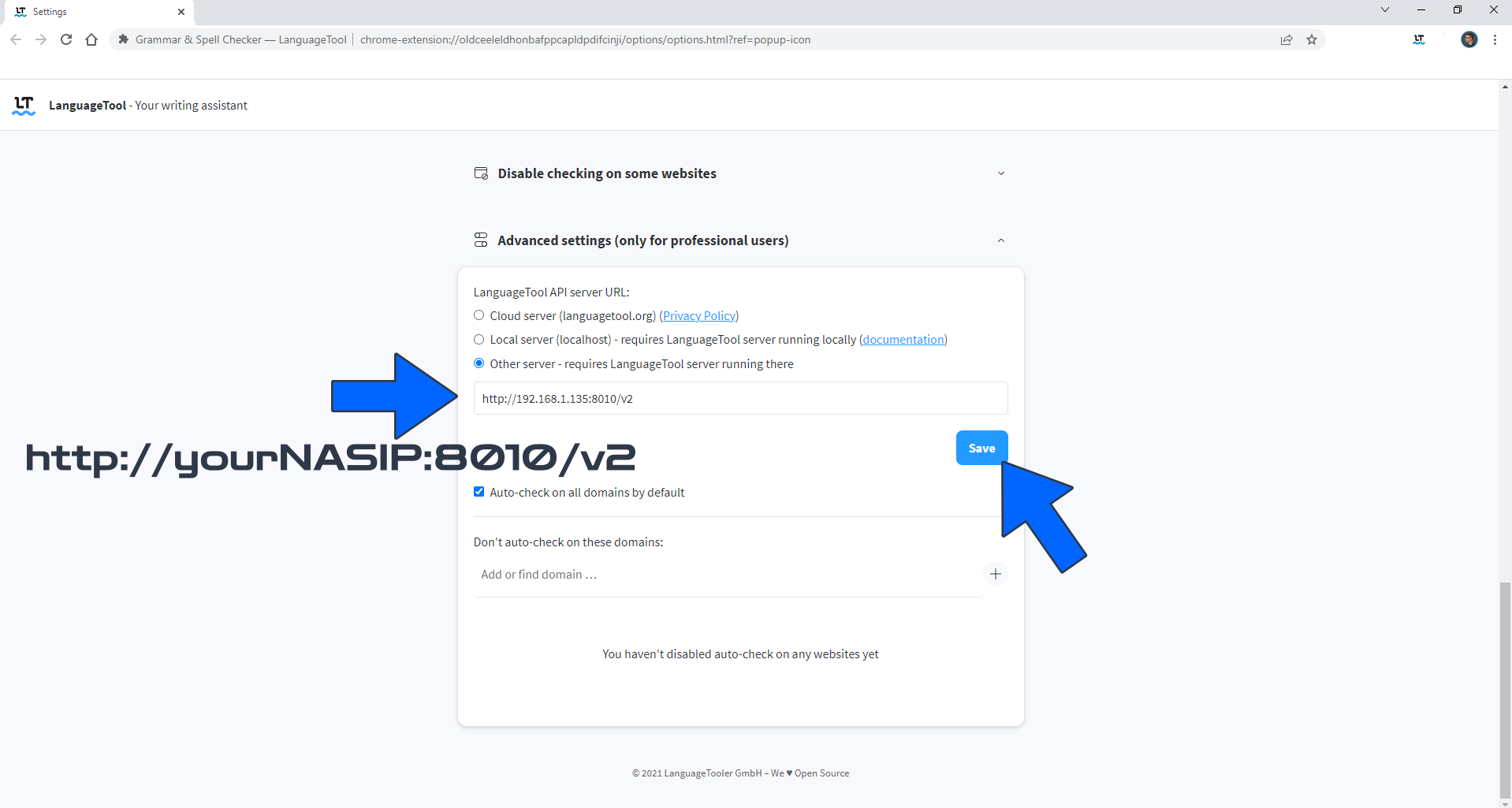
STEP 21
From this point on LanguageTool will automatically find all the errors on your page provided there is a text field. Take a look at the image below to see LanguageTool at work.
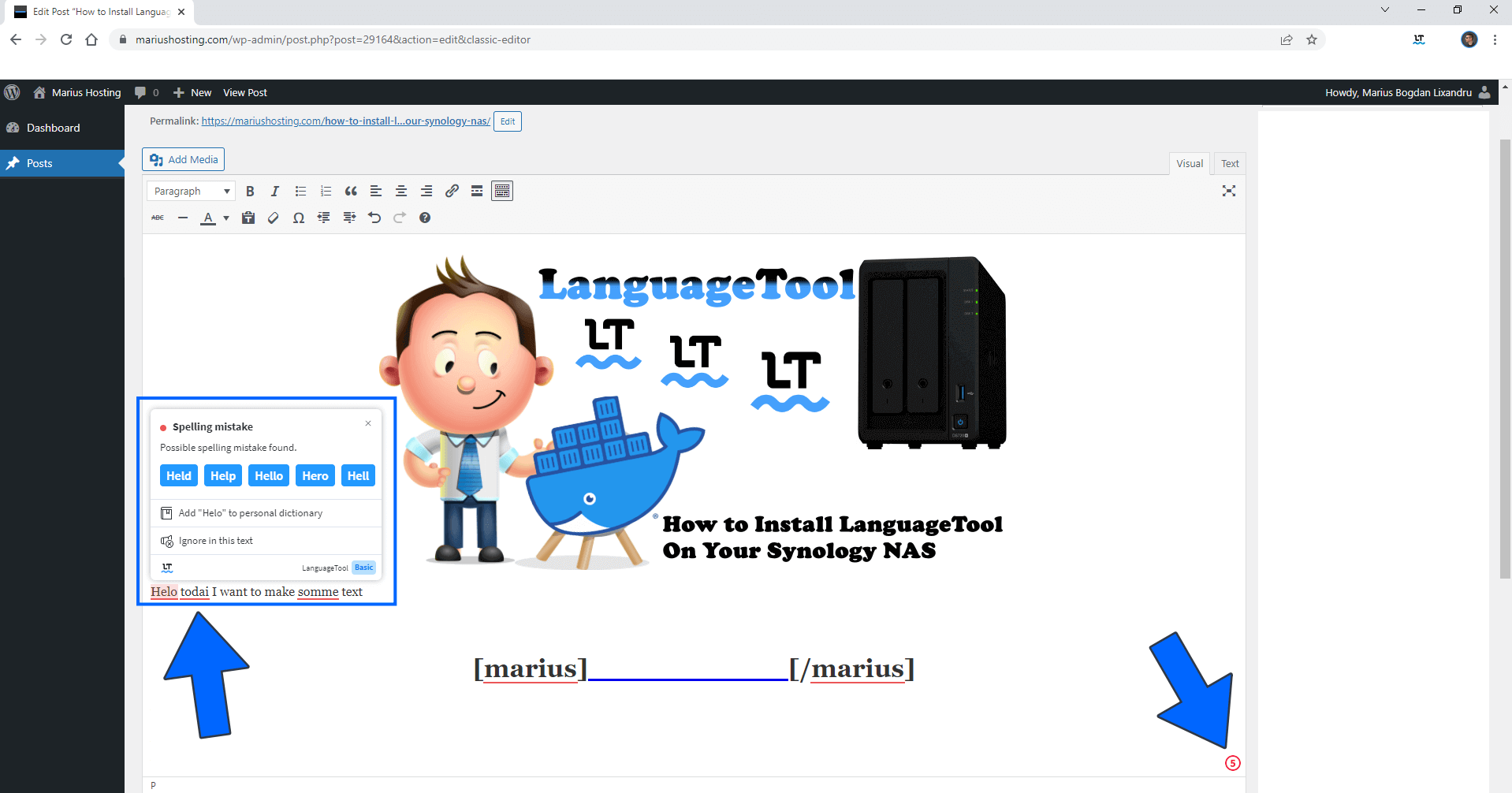
Enjoy LanguageTool!
If you encounter issues by using this container, make sure to check out the Common Docker issues article.
Note: Can I run Docker on my Synology NAS? See the supported models.
Note: How to Back Up Docker Containers on your Synology NAS.
Note: Find out how to update the LanguageTool container with the latest image.
Note: How to Free Disk Space on Your NAS if You Run Docker.
Note: How to Schedule Start & Stop For Docker Containers.
Note: How to Activate Email Notifications.
Note: How to Add Access Control Profile on Your NAS.
Note: How to Change Docker Containers Restart Policy.
Note: How to Use Docker Containers With VPN.
Note: Convert Docker Run Into Docker Compose.
Note: How to Clean Docker.
Note: How to Clean Docker Automatically.
Note: Best Practices When Using Docker and DDNS.
Note: Some Docker Containers Need WebSocket.
Note: Find out the Best NAS Models For Docker.
Note: Activate Gmail SMTP For Docker Containers.
This post was updated on Monday / January 6th, 2025 at 4:23 PM
